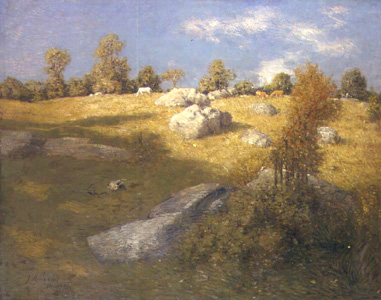Weir, J. Alden (1852-1919), was one of the most important American artists to paint in the Impressionist style. Weir entered his Impressionist period after falling under the influence of the French Impressionist painters, especially Édouard Manet, during trips to Europe in the 1880’s. See Impressionism .

Weir was a founder of a group known as The Ten American Painters, or The Ten. This group of Boston and New York City painters shared a commitment to Impressionism and began exhibiting their works together in 1898.
Julian Alden Weir was born in West Point, New York, where his father was the drawing instructor at the United States Military Academy. Weir received his first art training from his father at home along with his half-brother, John Ferguson Weir, who became a well-known painter and teacher.
J. Alden Weir made his first trip to Europe in 1873, studying art in Paris until 1877. He initially disliked Impressionism but began painting in the Impressionist style in the early 1890’s. The Red Bridge (about 1895) and Visiting Neighbors (about 1903) are typical of his work in the style. Weir painted portraits, landscapes, and figure studies. He also painted a mural for the 1893 World’s Columbian Exposition in Chicago. In addition to painting in oils, Weir worked in water color, pastel, and etchings.
